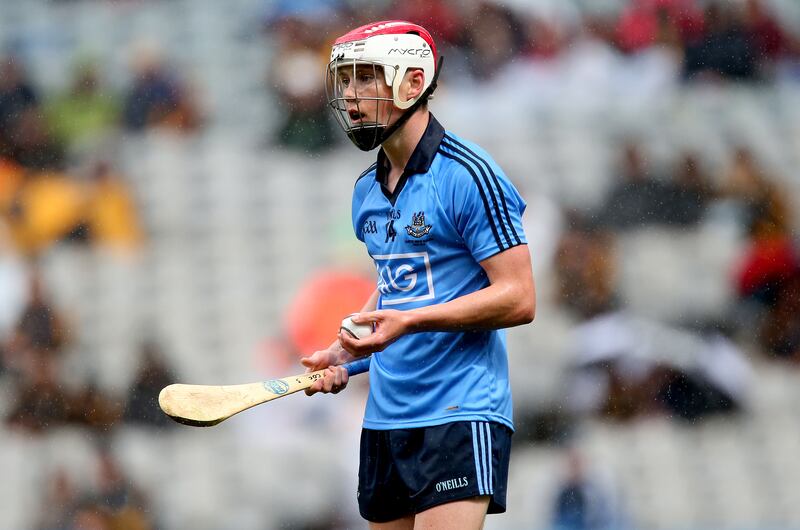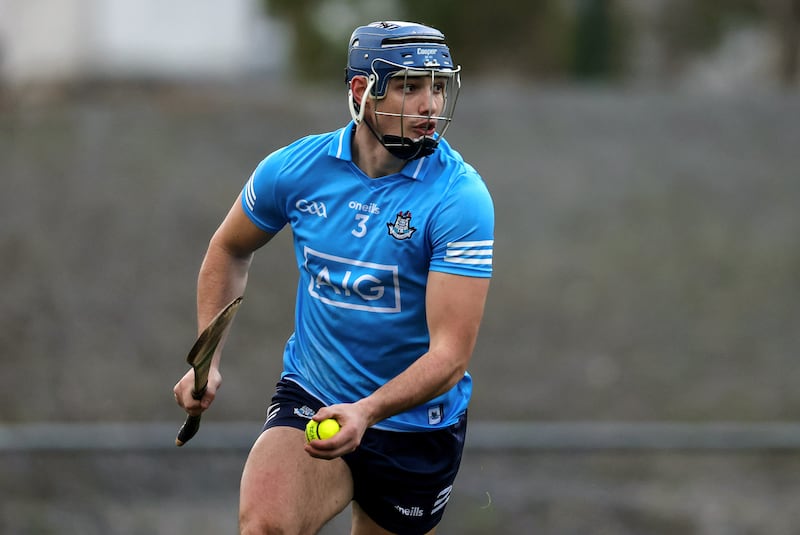My hurling career never progressed beyond smacking a tennis ball around the back garden. The Dublin hurlers never called. It’s fair to say, I was not a loss to the game.
And yet some of my fondest early Croke Park memories involve hurling. Long before I got to play there, I was fortunate enough to experience the magic of All-Ireland finals and semi-finals as a wide-eyed kid hanging around the dressingrooms.
My grand-uncle, Joe Rock, lived just a couple of doors down from Croke Park and for years he held the keys to the kingdom – Joe was in charge of opening the dressingrooms on match days, looking after them during the afternoon and locking up afterwards.
There is a rich family history with the stadium and it’s something we are very proud of – Joe’s dad, William, was a steward for decades and became known as the custodian of the balls – the man responsible for bringing the liathróidí out on All-Ireland final day. William was in Croke Park on Bloody Sunday, November 1920.
READ MORE
As a kid, Joe used to accompany his dad. Many years later, from when I was around eight or nine, I would travel with my dad to Croke Park on the morning of All-Ireland finals and semi-finals where we’d meet Joe and I’d tag along with him for the day.
When it comes to hurling, I can still remember watching Cork’s Joe Deane getting off the team bus, or Paul Flynn from Waterford arriving at the dressingroom; there was an aura around Henry Shefflin and many of the Kilkenny players when they were in their pomp.
We would have travelled to Croke Park early in the morning, probably around 10 or 11. Joe would open up, there’d be cups of tea in the dressingroom first and then the teams started to arrive and the day would unfold. I just stayed in the background trying to take it all in, always aware of how lucky I was to be in such a position.
I remember coming home after hurling days at Croke Park and I’d go straight out to the back garden and start pucking about.
The Dublin hurlers didn’t tend to threaten the business end of the championship back then and so you’d be out pretending you were Deane or Shefflin or whoever had made an impact on you in Croke Park earlier that day.
There was no hurling in my school in Garristown, and Ballymun Kickhams is solely a Gaelic football club. Setanta is the hurling club in Ballymun, so while I also played soccer and rugby growing up, I didn’t play hurling.
But as I progressed through various Dublin underage football squads, there were always players who lined out in both codes. The dual-player debate was a common one and there’s no doubt that over the years the Dublin hurlers largely lost out to the footballers in that particular tug of talent.
The two senior panels would have interacted quite a bit over the years, particularly in the gym in DCU.
The Anthony Daly era really raised the profile of the hurlers – and there was genuine momentum behind them during that time.
When they won the Leinster title in 2013, the footballers decided that we would go to the All-Ireland semi-final against Cork as a group to support the hurlers. They had a great chance of reaching the All-Ireland final that year and it was one of the rare moments the footballers got to be together in Croke Park as fans.
Had Dublin won that match, the trajectory of hurling in the capital could have been very different over the last decade. I felt there was a genuine chance of an All-Ireland double that year, but unfortunately it didn’t come to pass.
Still, I’m not even sure they would necessarily have had to win the final against Clare in 2013 for something special to follow, because for kids in Dublin just seeing their team play an All-Ireland final could have been a turning point for the game in the capital.

Con O’Callaghan is a brilliant hurler, he didn’t make his championship debut for the Dublin footballers until 2016. His brother Cian was a key player with the hurlers at the time so if they had been consistently in the mix for Liam MacCarthy would it have made Con’s choice of code more difficult?
The Dublin hurlers could fill a dressingroom with football players who might have bolstered their ranks, whether it be somebody like Con, Ciarán Kilkenny, Cormac Costello, Eric Lowndes or Emmett Ò Conghaile.
I remember Tomás Brady’s decision to leave the hurlers and join the footballers in advance of the 2013 season caused a bit of a stir. Tomás had won a league title with the hurlers in 2011 and was widely regarded as one of the best defenders in the game.
So, he was taking a chance leaving all that behind to come in with the footballers – but he was a brilliant fella around the group, he trained so well, he was such a strong man and a great footballer.
The professionalism he brought to the whole thing definitely had an impact on the group and despite a couple of bad injuries he strengthened our squad during his time in the dressingroom.
More recently, in 2022 Eoghan O’Donnell made a similar trek – albeit only for the latter stages of the championship that year. Eoghan was the Dublin hurling captain at the time and I’d imagine the news wasn’t positively received by all of the hurlers and Dublin hurling supporters, so it was a brave call by him.
But for me it was a no-brainer. The Dublin hurlers had been knocked out of their championship, we had been struggling a bit that season and Eoghan was not only a talented footballer with Whitehall Colmcille but, given he was captain of the hurlers, clearly he was a leader too.
I’m sure he learned a huge amount from that experience about how we went about our business and he was able to take it back to the hurlers.
Eoghan will be in the Dublin full-back line on Saturday evening when the Dubs face Kilkenny in the Leinster senior hurling final. It feels like a real opportunity for Dublin hurling because the momentum harnessed during those Daly years drained away quickly in the seasons that followed.
There haven’t been any great expectations or chatter around the team for a long time now and, while they have posted several decent wins, a lack of consistency has seen them largely flatter to deceive. They haven’t been near the All-Ireland picture for years.

But they have given themselves an opportunity now to spark a flame again. The 2021 Leinster final was played during the Covid years, this one feels a bit more real, and it feels that there is more potential to generate momentum.
And that’s what the Dublin hurlers need to do. They play second fiddle to the footballers in terms of success and support (though the Leinster hurling final will probably have a bigger crowd than the football one this year). Perhaps it is unfair that the two are compared – but it’s up to this group of players now to change perceptions.
Saturday has to be viewed as a starting point – win or lose, they can’t go back from this progress next year or the year after. Dublin need to be playing regularly in Leinster finals, All-Ireland quarter-finals, semi-finals.
The more significant games they play, the more they will improve as a team, the more eyes will be on them, and the more Dublin kids get to see their county playing at the business end of the championship the more they will aspire to play hurling.
There has been positive work done at underage level over the years but it hasn’t always translated to senior success with the hurlers. This group has to inspire the next generation, the kids need heroes to look up to, they need Dublin hurlers to imitate in their back gardens.
Participation levels in Dublin indicate the county should be able to produce competitive senior teams in both codes regularly.
It would be hugely disappointing if the Dublin hurlers let their season go out on a whimper now, they need to use this Leinster final as a springboard. The hurlers have been out of the conversation for too long – this is a chance to get people talking about them again.


















